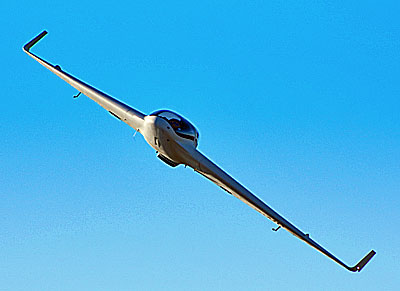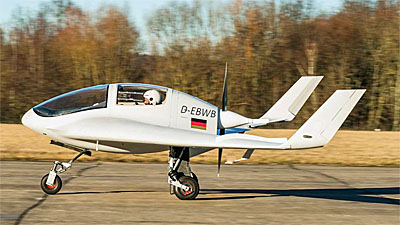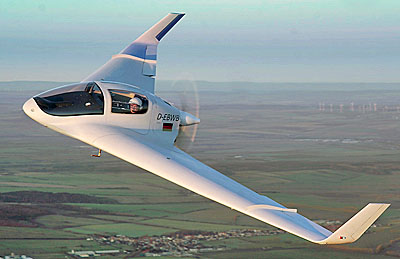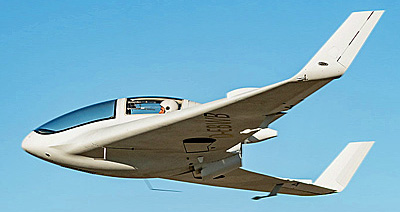 Something old. Something new. Hang glider pilots I know are very familiar with Horten designs, a form of validation for modern hang gliders …flying wings, aircraft with no tail or fuselage structures. Yet many pilots don’t know Horton and have only a sketchy understand of flying wing stability.
Something old. Something new. Hang glider pilots I know are very familiar with Horten designs, a form of validation for modern hang gliders …flying wings, aircraft with no tail or fuselage structures. Yet many pilots don’t know Horton and have only a sketchy understand of flying wing stability.
World War II History
As the second great war progressed, Germany sought more advantage as fanatical government leaders pursued their ambitions. The war was dragging on and they needed better war equipment.
 In 1943, Reichsmarschall Göring issued a request for design proposals to produce a bomber that was capable of carrying a 1,000 kilogram (2,200 pound) load over 1,000 kilometers (620 miles) at 1,000 kilometers per hour (620 mph) — the so-called “3×1000 project.” Conventional German bombers could reach Allied command centers in Great Britain, but were suffering devastating losses from Allied fighters.
In 1943, Reichsmarschall Göring issued a request for design proposals to produce a bomber that was capable of carrying a 1,000 kilogram (2,200 pound) load over 1,000 kilometers (620 miles) at 1,000 kilometers per hour (620 mph) — the so-called “3×1000 project.” Conventional German bombers could reach Allied command centers in Great Britain, but were suffering devastating losses from Allied fighters.
At the time, no aircraft could meet these goals. Junkers turbojet engines could provide the required speed but had excessive fuel consumption.
Walter and Reimer Horten concluded that a low-drag flying wing design could meet all of the goals. By reducing drag, cruise power could be lowered to the point where the range requirement could be met. They put forward their private project, the H.IX, as the basis for the bomber.
 The Government Air Ministry approved the Horten proposal, but ordered the addition of two 30-mm cannons because they felt the aircraft would also be useful as a fighter as its estimated top speed was significantly higher than that of any Allied aircraft.
The Government Air Ministry approved the Horten proposal, but ordered the addition of two 30-mm cannons because they felt the aircraft would also be useful as a fighter as its estimated top speed was significantly higher than that of any Allied aircraft.
In short, flying wings are lean and make efficient use of the weight of their structure. That sounds like worthy qualifications for a Light-Sport Aircraft or Sport Pilot kit.
Near Future Announcement
Indeed, at the Aero Friedrichshafen event in about one month Horten Aircraft will present its civilian flying wing aircraft at a World Premiere debut. (No cannons will be included.)

Test pilot Kai Schülter tests the HX-2 aircraft. An evaluation program will last several months.
After three years of development, German aircraft manufacturer Horten Aircraft will unveil its prototype flying wing that is already undergoing flight testing as the nearby photos attest. “This aircraft is a highly modern economical two-seat tailless light aircraft without a fuselage,” said the company.
“Due to its low aerodynamic resistance, the flying wing flies farther and faster than a comparable aircraft with a fuselage,” said Bernhard Mattlener, Managing Director of the company that belongs to the Lift Air group. Lift is also the owner of Flight Design and their CT series plus the Rotorvox luxury gyroplane.
“The design of the airframe makes it easily adaptable for installing new propulsion technologies we anticipate will become available in the future,” added Mattlener. Horten Aircraft plans further developments, such as multi-seat and unmanned versions of its current prototype.
 The aircraft will be built at the company’s headquarters at Kindel Airfield near Eisenach, Germany where Lift is headquartered.
The aircraft will be built at the company’s headquarters at Kindel Airfield near Eisenach, Germany where Lift is headquartered.
At the beginning of the 20th century — in 1910, a mere seven years after the Wrights flew their Kitty Hawk Flyer off the North Carolina sand dunes — Hugo Junkers received a patent for his work on flying wings. The modern company name honors the visionary aircraft designer, Dr. Ing. Reimar Horten (1915-1994). “He is regarded as a pioneer in the field of flying wings and made the most significant contributions to the development of the forerunner prototypes,” said Mattlener.

While this is not a Flight Design LSA project, the Horten will become part of the Lift family of recreational aircraft. I also expect to report on other aircraft developments from the German producer.


I have been flying the Mitchell wing for 40 some years and I am going to get their wing when they put them up for sale.
Interesting article and aircraft. Will be interested in seeing more details! Will this be an LSA? Will a kit be offered?
That said, I have been doing some reading and studying on the WWII Horten flying wings. The brothers were years ahead of everyone in aircraft design. The prototype statistics are impressive for something built in the 1940s. The 229 was the first stealth aircraft. For details check YouTube for the design tests done in the USA a few years ago to determine how ‘stealthy’ the aircraft was — especially against WWII radar in Britain.
It did not have stealth materials or technology… but the smooth design of it made it much more difficult to see on radar of that period…
I am building mine but cannot comment until it flies.
Here is a German one flying
https://youtu.be/to3_zToZrLA
Wow! Great video and beautiful aircraft. I’d be interested in seeing what you are building.
Seems like it taxis forever…
Sehr schoen, Gratuliere, Bitte Adresse von Euch geben. Alles Gute !!!
Pd : Binn der Sohn von Dr. Reimar Horten
Hello Diego: You asked for an address. Please go to this link for direct contact. ••• [Computerübersetzung] Sie haben nach einer Adresse gefragt. Bitte gehen Sie zu diesem Link für direkten Kontakt.
Dear Mr. Horten,
Thank you for your congratulations!
I am Bernhard Mattlener. I was building the PUL9 and PUL10 together with Siegrfried Panek. I guess you maybe didn`t hear my name yet. I never visited Argentina. It was always Mr. Panek who visited your father, because he had his house in Villa General Belgrano. I was the finacier and Manager in the “backoffice” 🙂
I have a lot of pictures of your father during the time when Siegfried Panek visited him. I would be glad to be in touch with you and the HORTEN family. In case you plan a trip to Europe, please let me know.
Best regards,
Bernhard Mattlener
General Manager
HORTEN Aircraft GmbH
The “flying wing” is a perennial rediscovery, which perennially leads to another rediscovery: that any flying wing can be improved by adding a tailboom and tail, then redesigning the wing with less sweep, less washout, and less area.
This is why sailplanes – which pursue performance ruthlessly – keep converging on the same configuration: straight, high-aspect wing; pod fuselage; long tailboom; small tail. Yes, there have been a few flying wing sailplanes, but they have not beaten the standard configuration.
Hang gliders work, but they are not high-performance aircraft in an absolute sense (although they are highly evolved to do what they do). To increase the performance of a hang glider, you reduce sweep and washout. Both are key contributors to its pitch stability, so at some point, you then find you need to… add a tail. (Take a look, for example, at the history of the Atos line of high-performance hang gliders.)
One other thing: downward visibility from this particular aircraft must be rather limited.
I am a tailless fan and this development is very exciting. But the trim drag of a plank and twist of a swept wing always seem to defeat the wings. I still fly one, and will drool over this new one, but lets be honest, the leverage a conventional tail has over the pitch axis is key to reducing trim drag, and total wetted area doesn’t matter as much. Wings are just really cool, safe aircraft that don’t have to be cutting edge performers.
Look up the Vulcan bomber. Looks very similar.
The flying wing is a great design. However, I certainly hope they have the electronics to handle the stall characteristics.
https://www.airspacemag.com/history-of-flight/too-much-too-soon-137775401/
Also, the pictures are far away. I hope they make the cockpit big enough for us Americans.
I wonder if there’s distortion in the windshield with the pilot so far back.
Gary Evans
Germans are every bit as big as we are. You can’t drink their kind of beer and eat sausages and be skinny.
Good report Dan. Looking forward to see this bird fly.